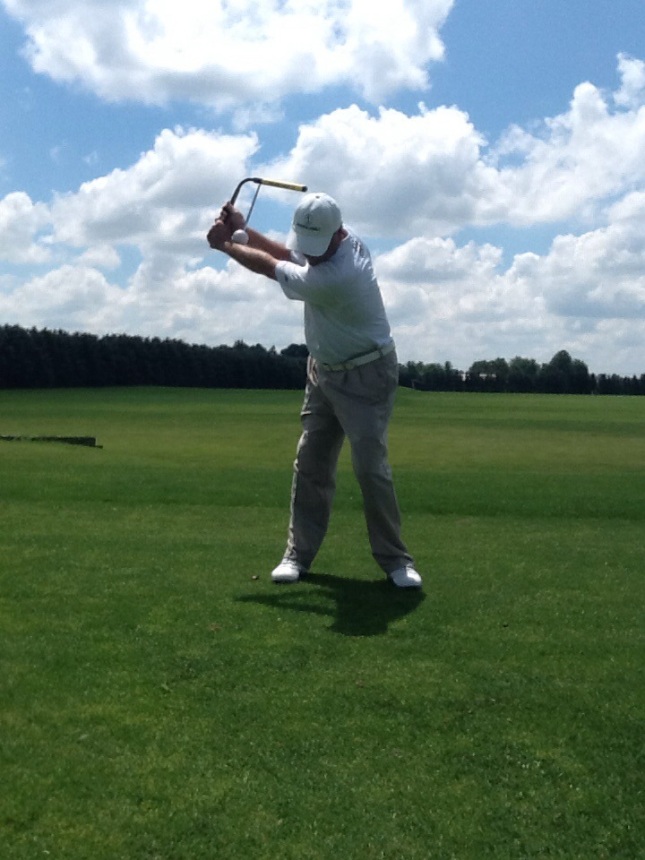One of the most important factors in generating long distance in your game is the distance you keep the club head away from your “swing center” during your swing!
After 25 years of observing my students, it is clear to me that a significant number of golfers don’t understand this principle, and do not feel a loss of the necessary wide radius of the forward arm during the swing.
Here are the places during your swing that you should have the maximum radius: 1. At the end of your backswing, 2. At impact,
3. At the shaft parallel to the ground position post impact.
You do not want your golf swing to break down like a cheap chair at any point during your swing. It will result in a terrible loss of power !! In other words, if the movements of your swing are not sequentially correct, breakdowns occur that result in loss of power and accuracy. I have always believed that most high handicap players have a propensity to pay little attention to their “pivot” sequence which, by default, leads to a swing dominated by broken down arms at critical points functionally slowing the swing down.
Observing your swing on video can validate your suspicions of broken arms. Practicing correctly with the Amazing Angle golf swing trainer will habituate great positions and sequences in your swing.
You can create this efficient position by slow and deliberate practice!
Remember to continue to visit this blog for ideas on practicing efficiently with your precious practice time!
